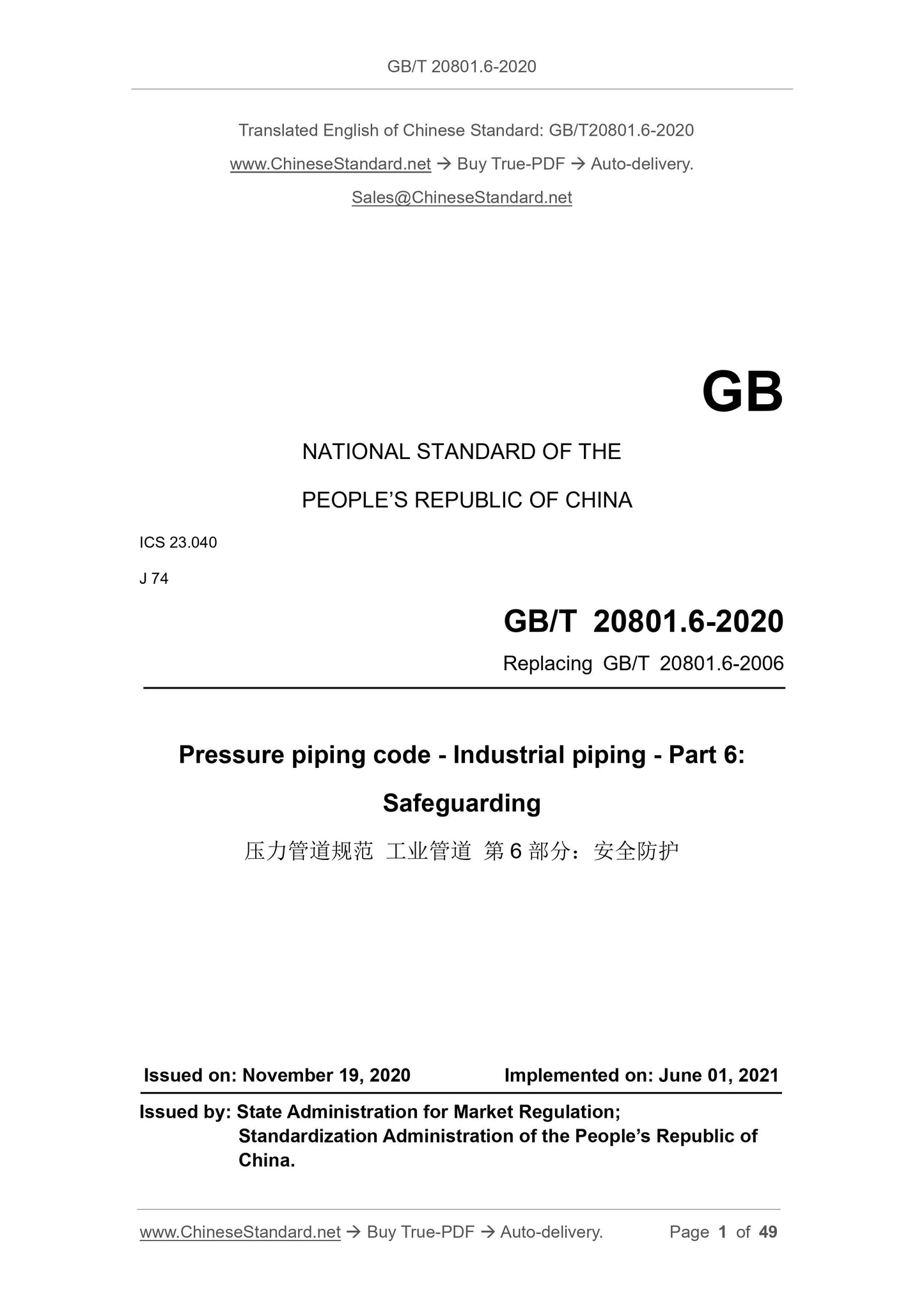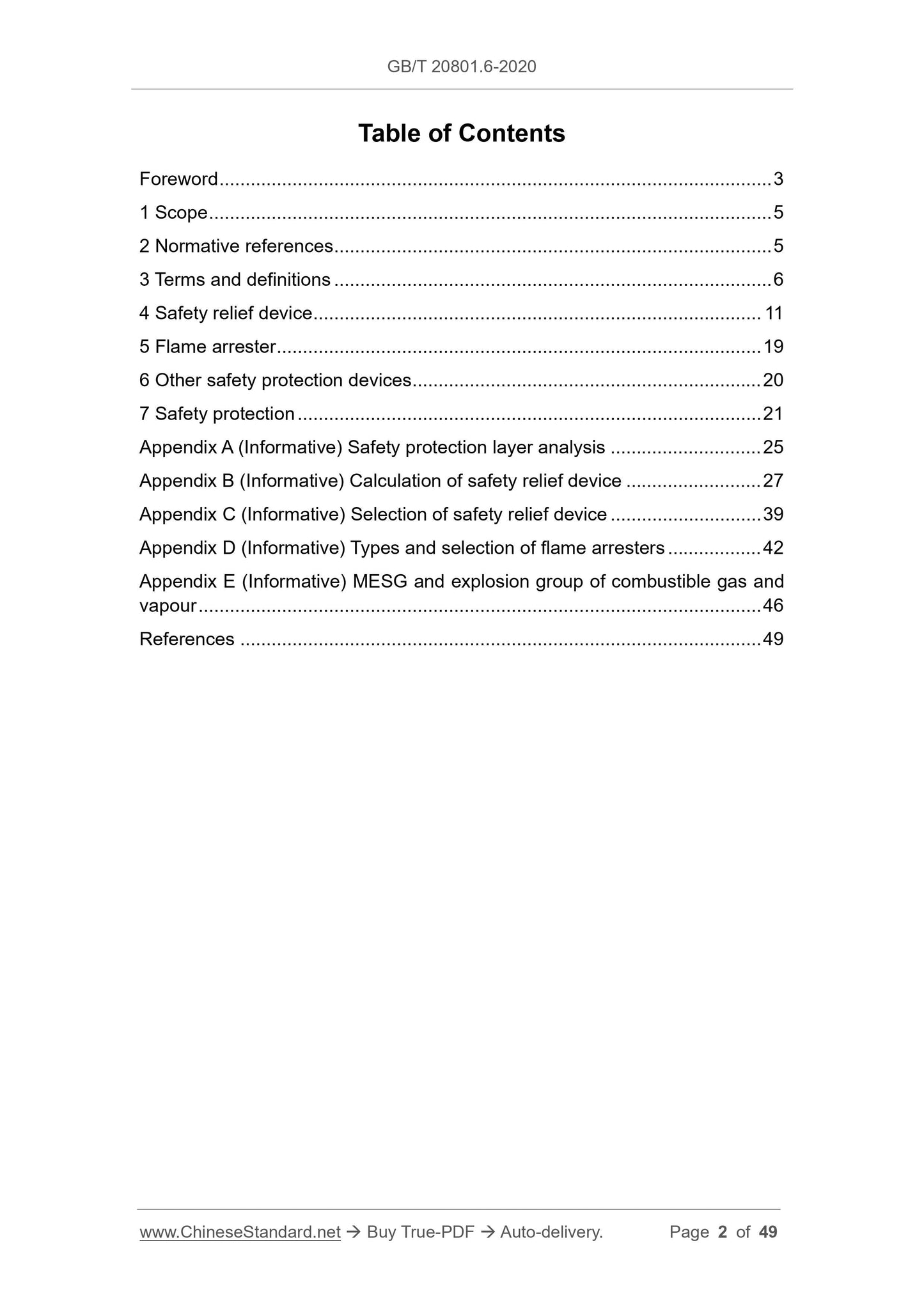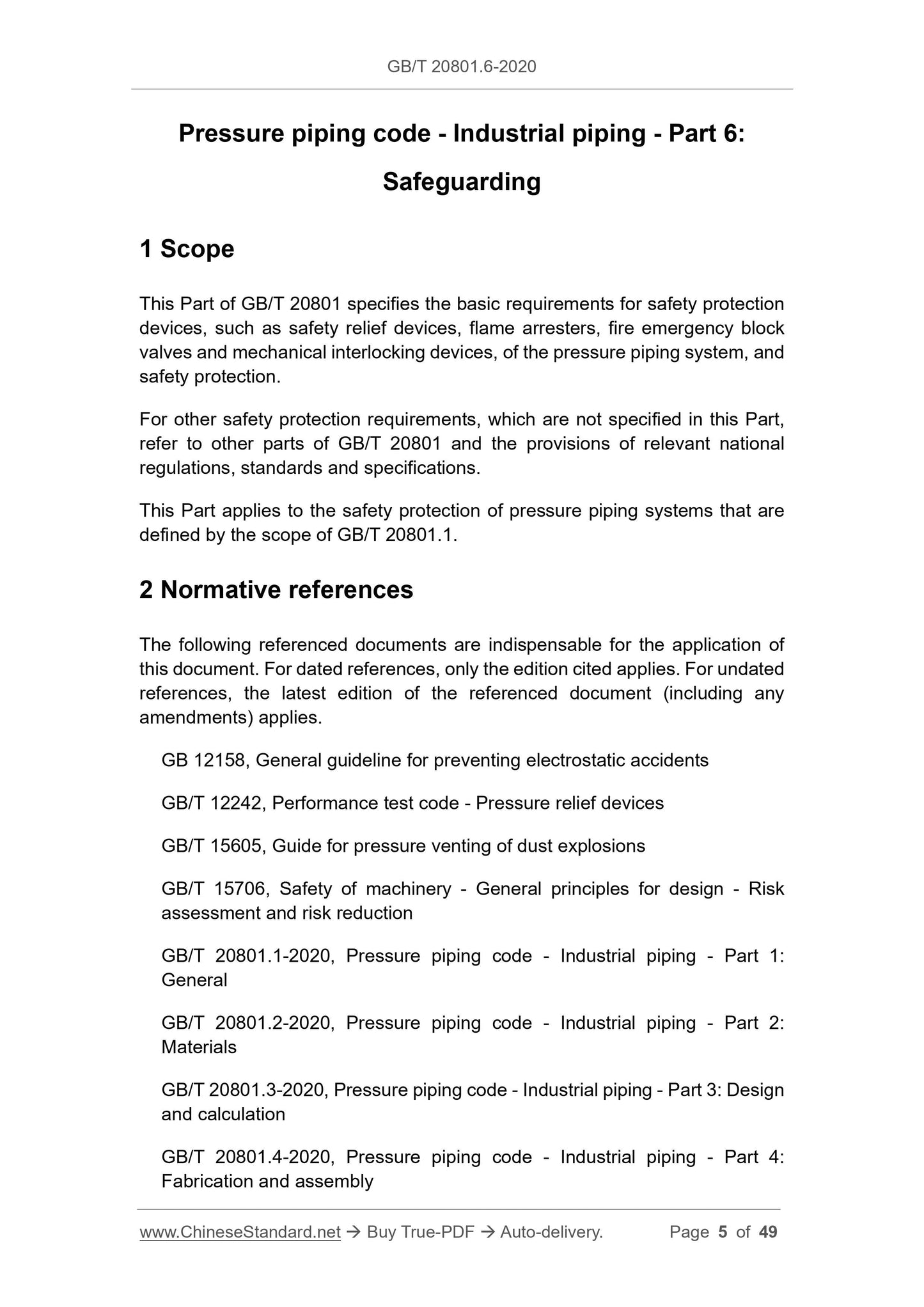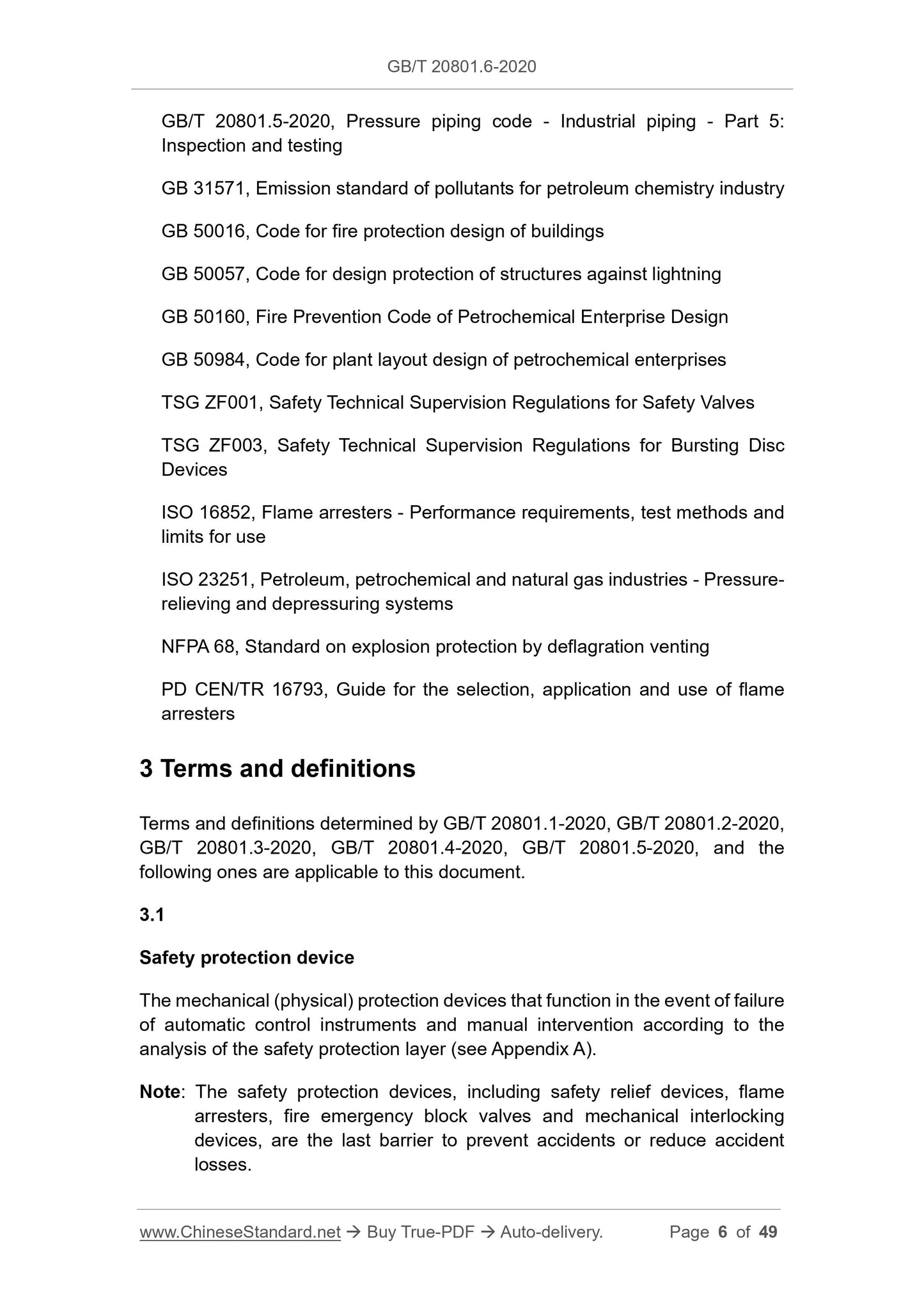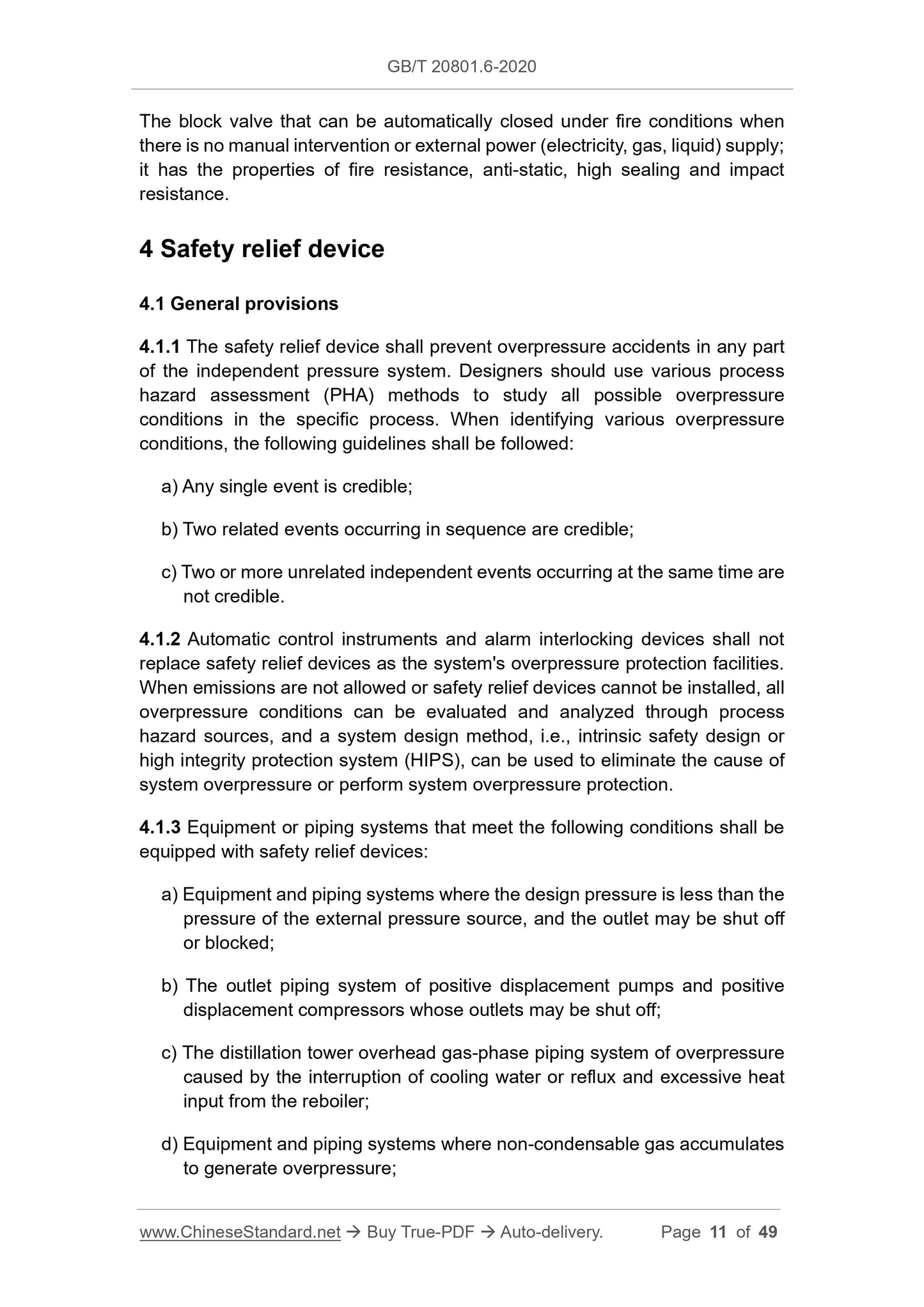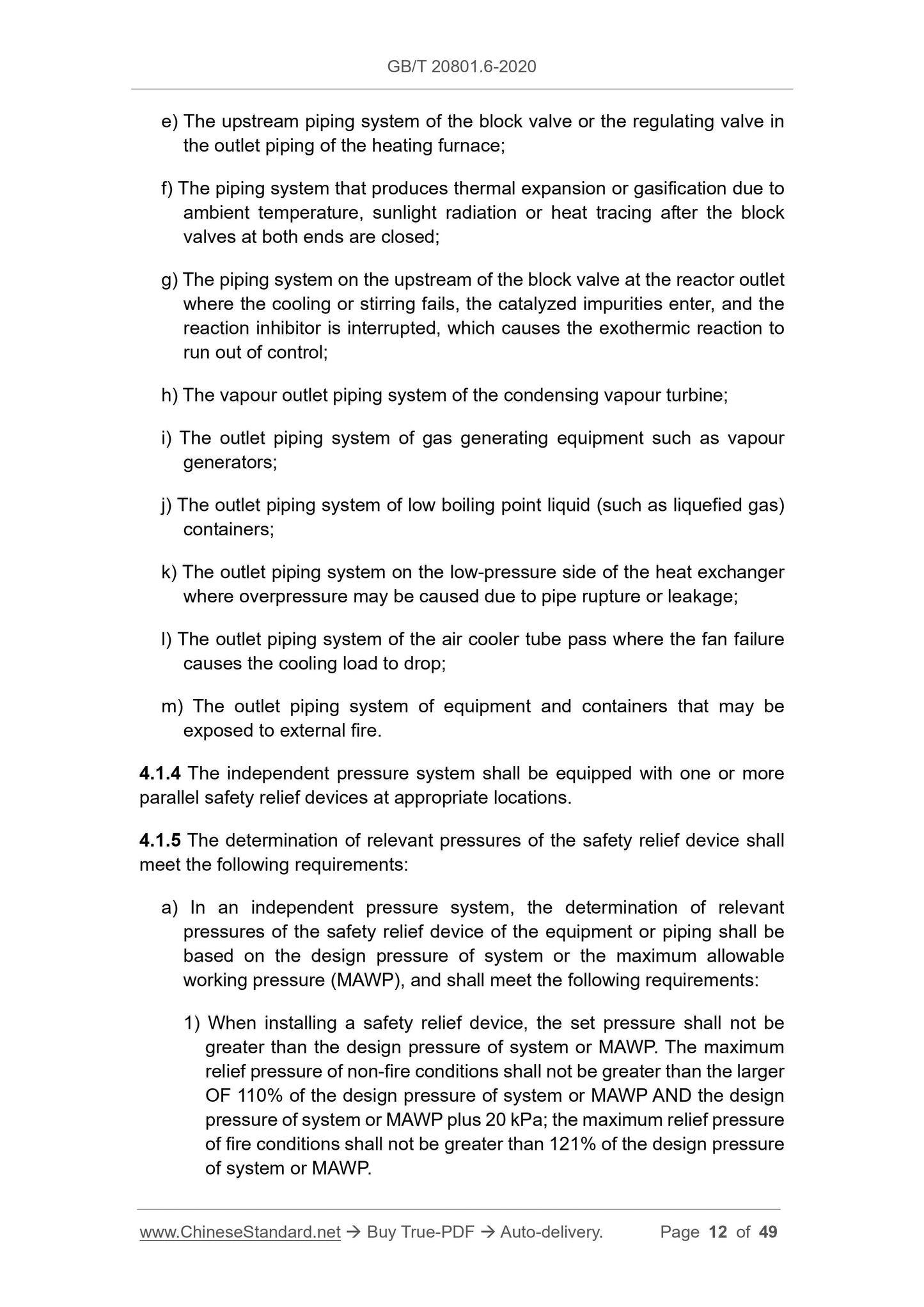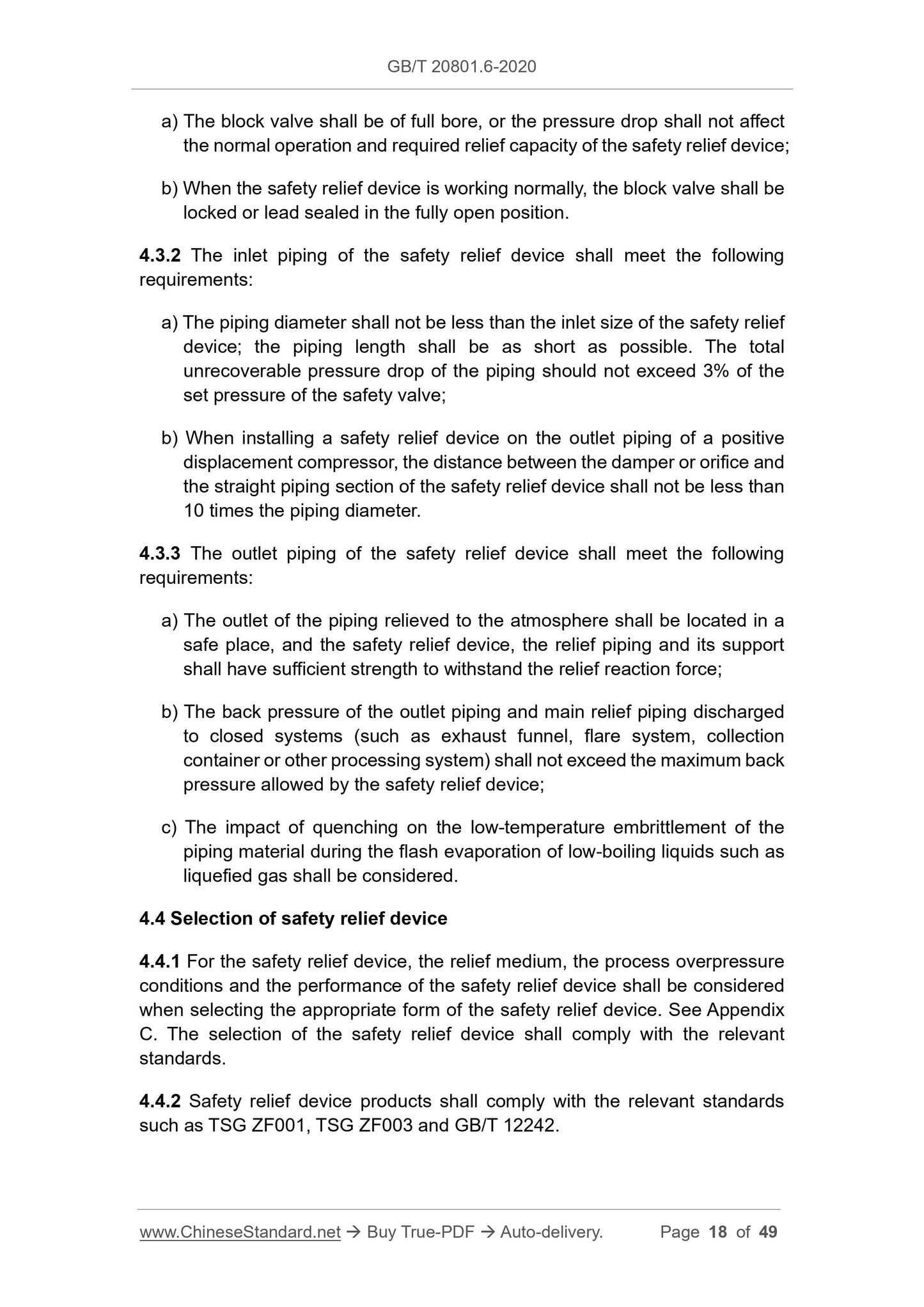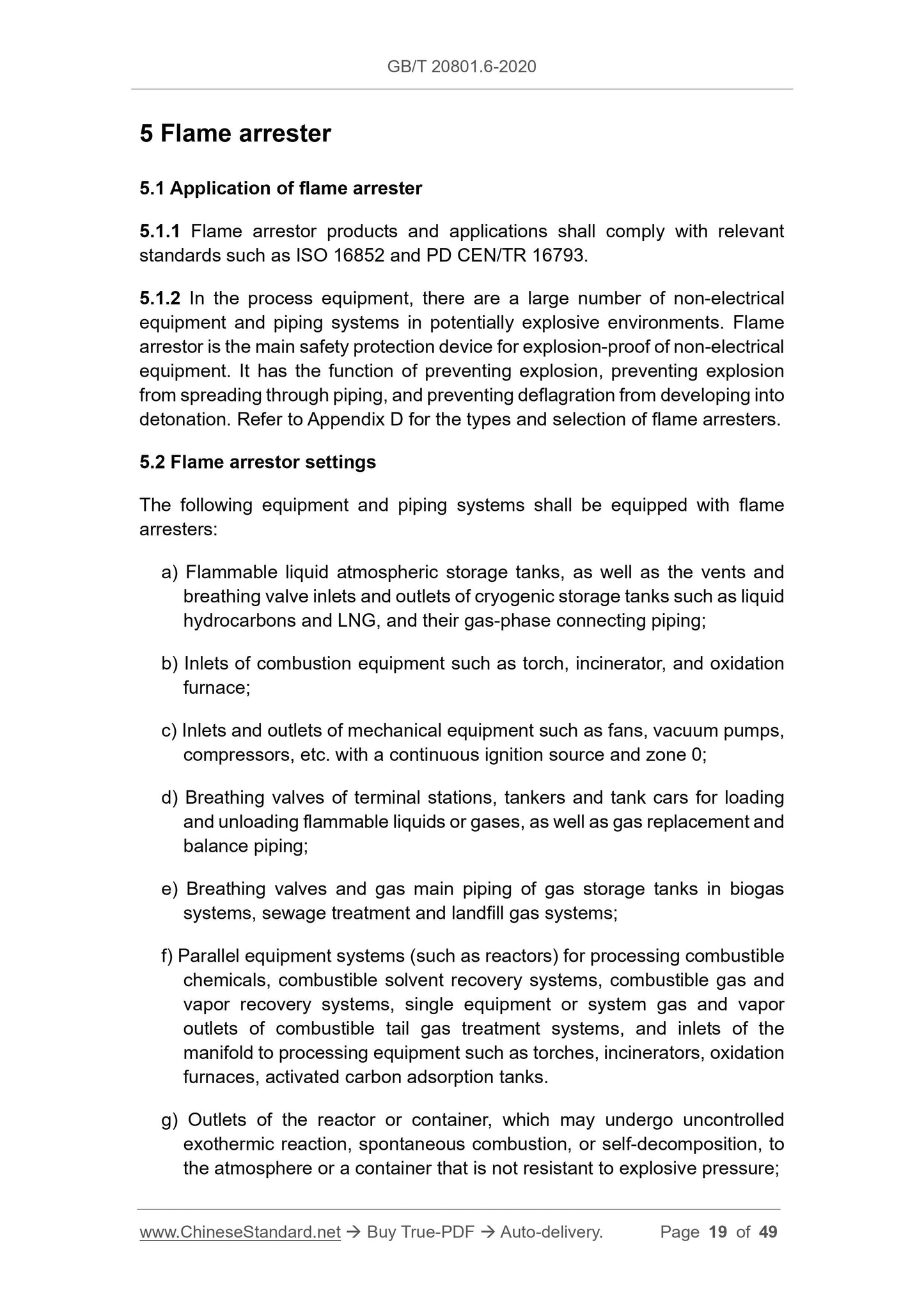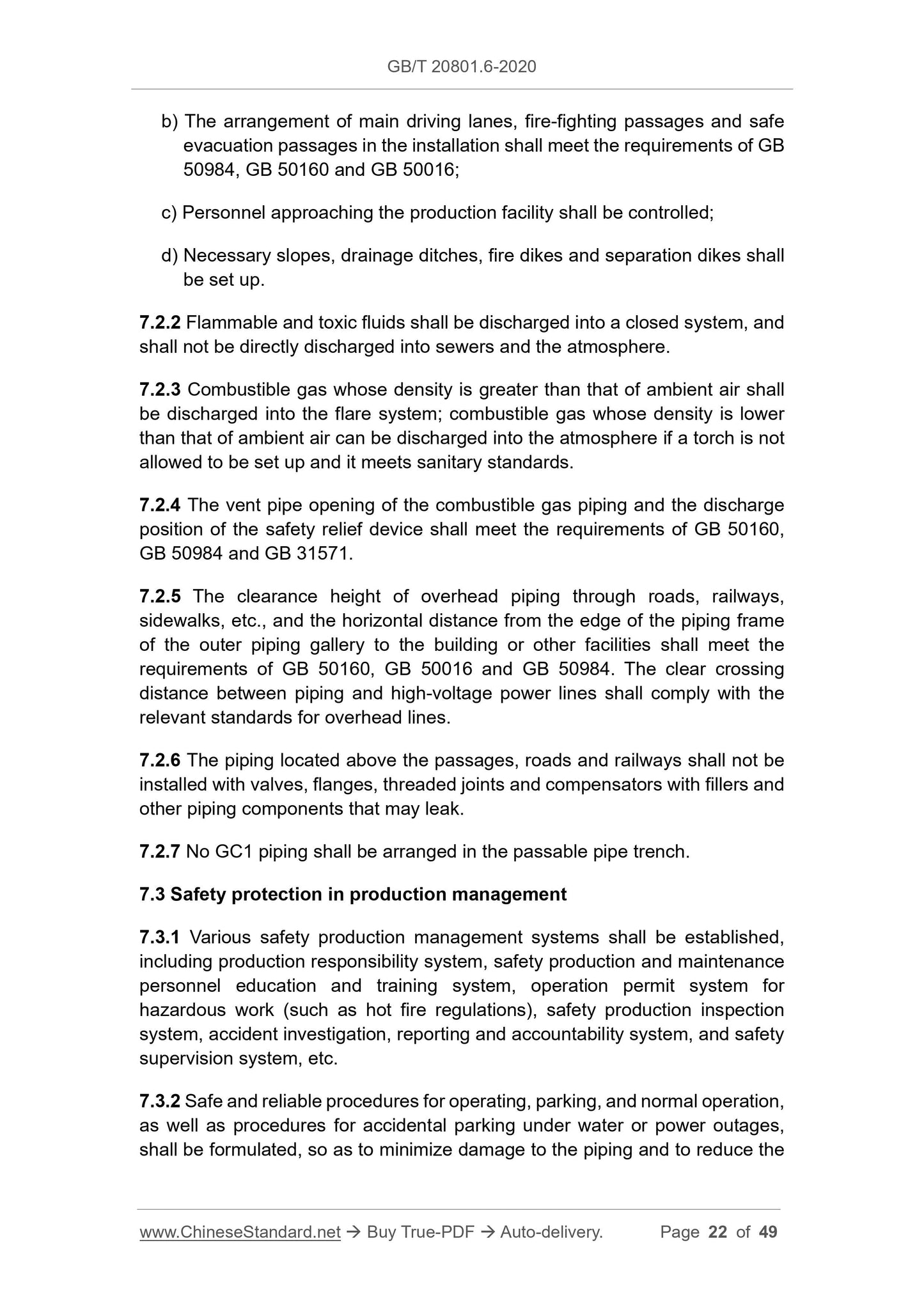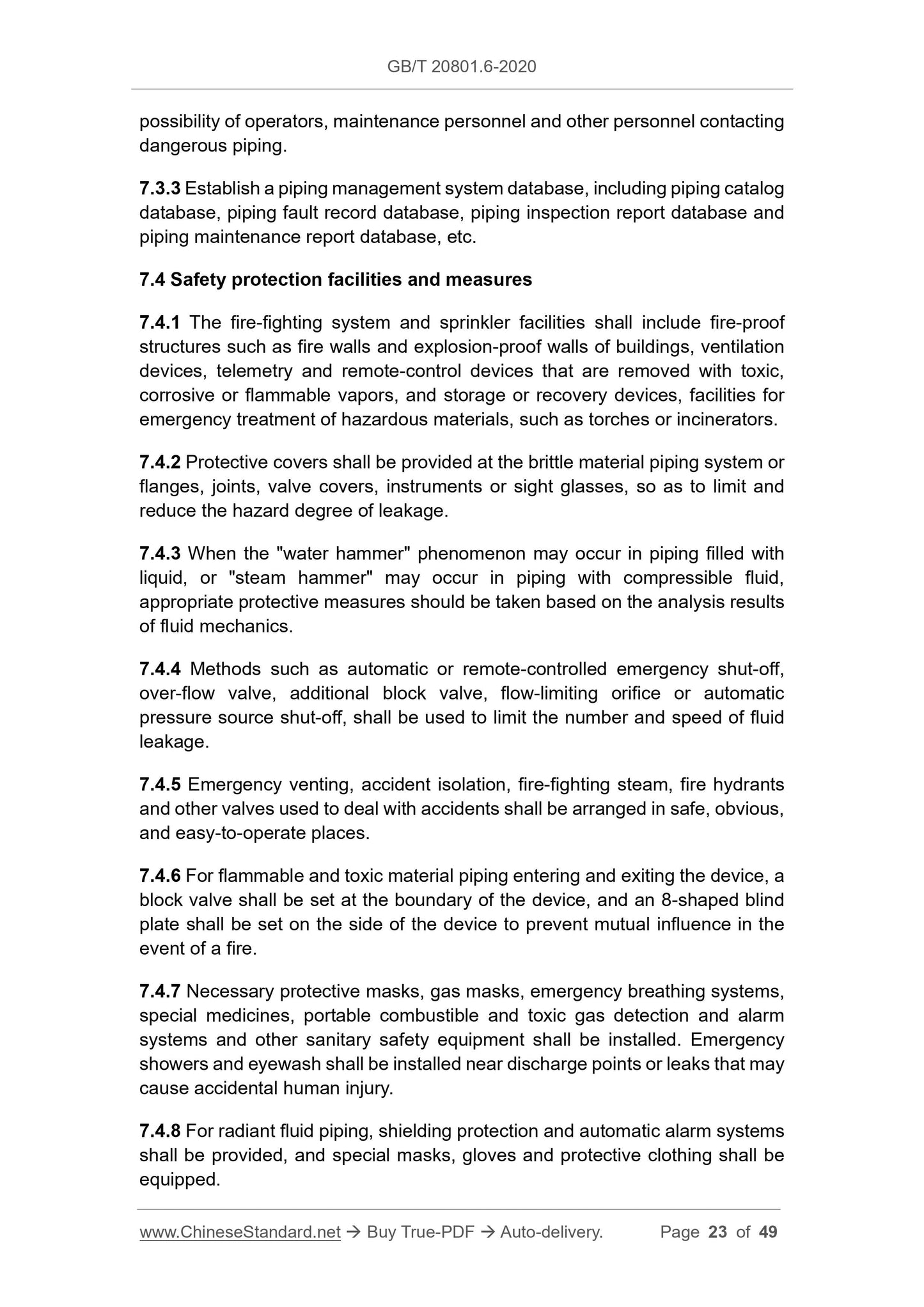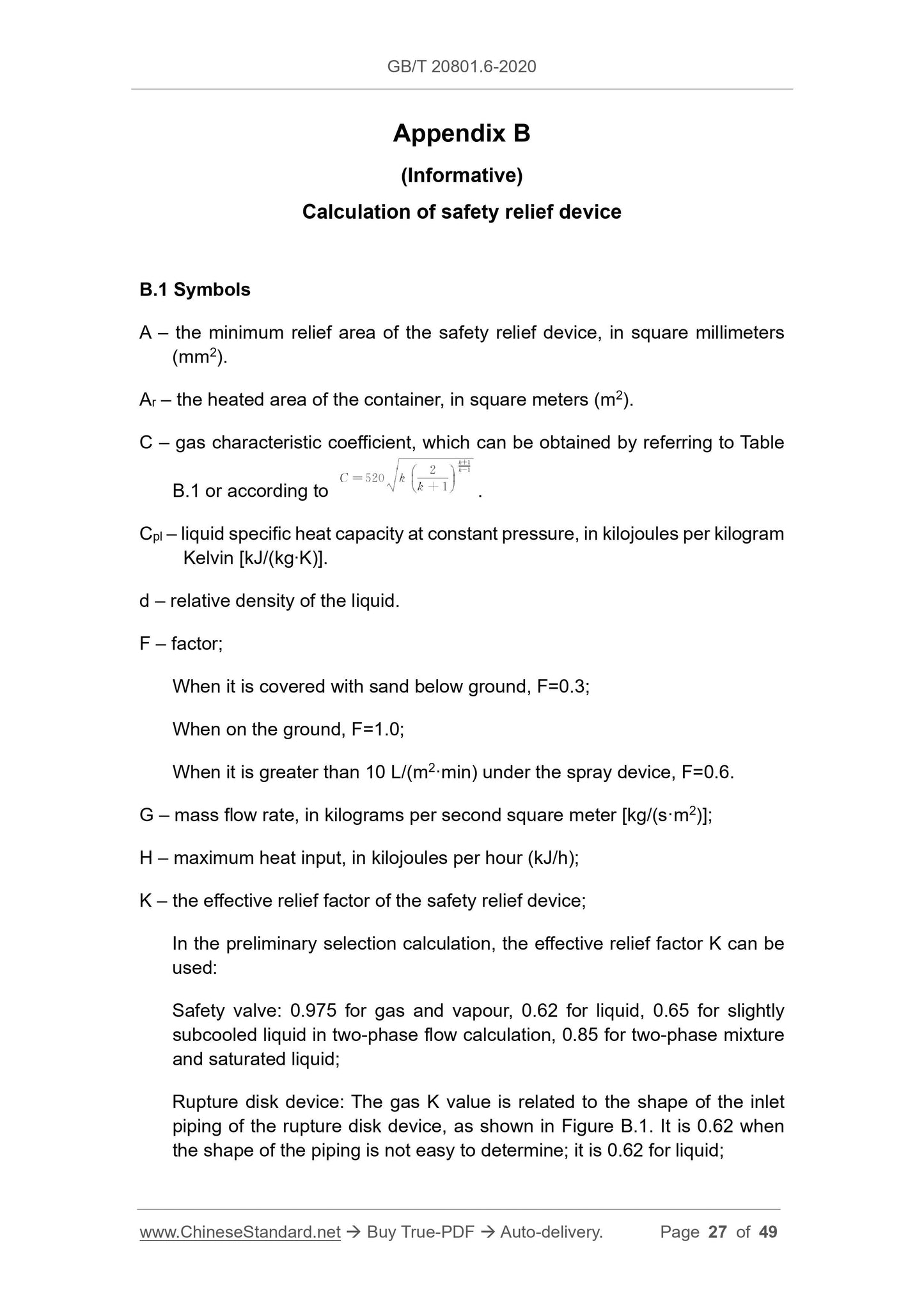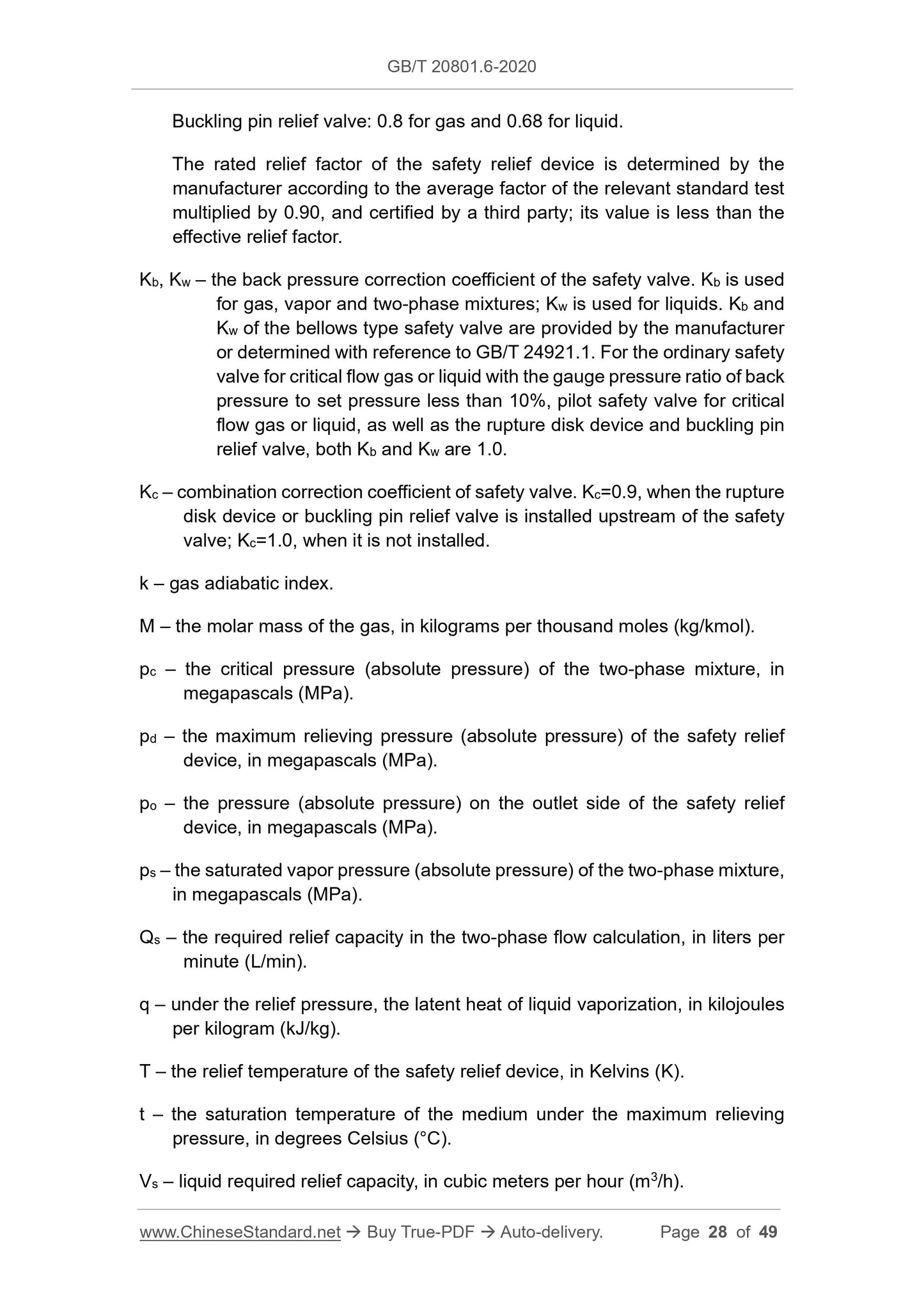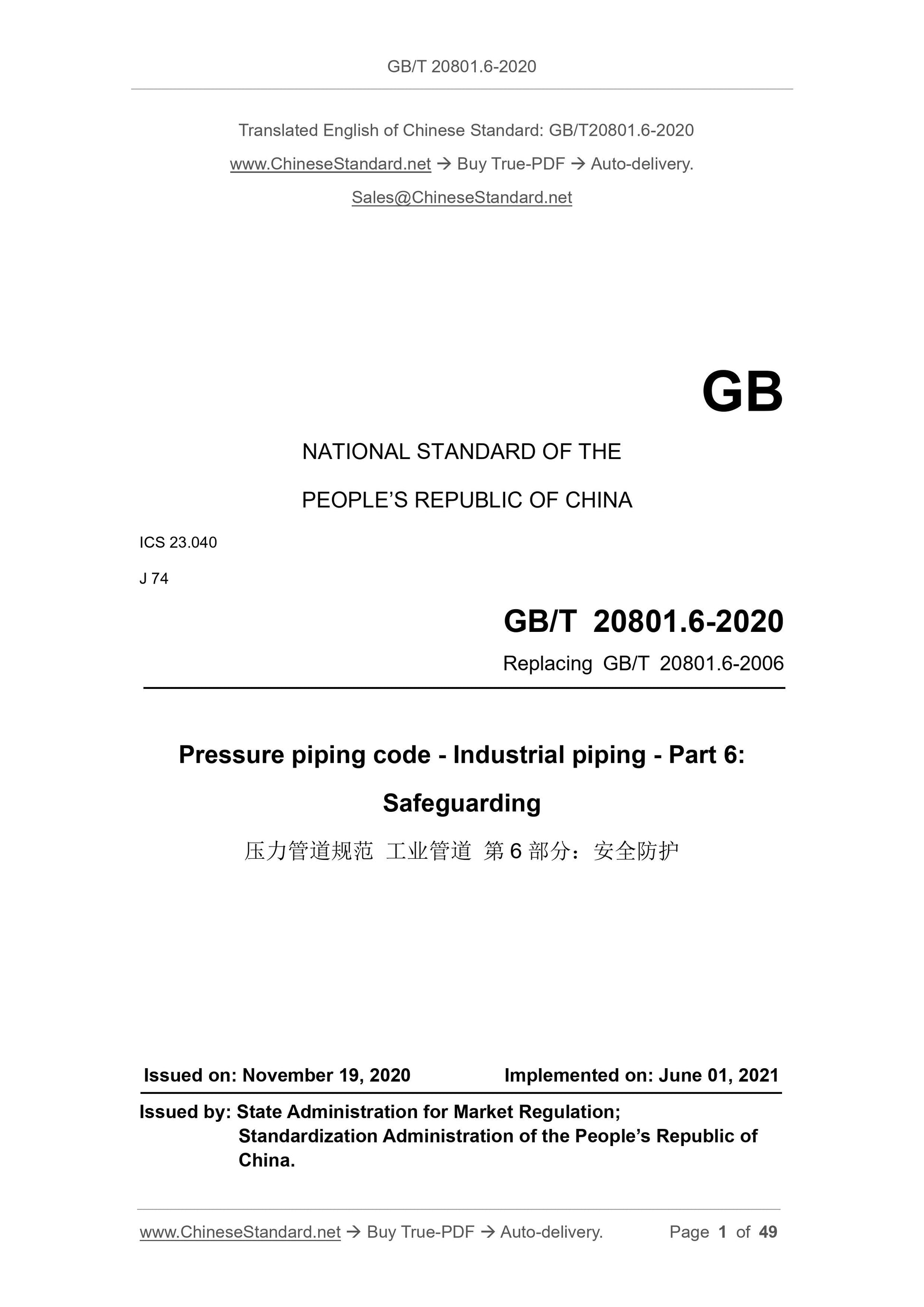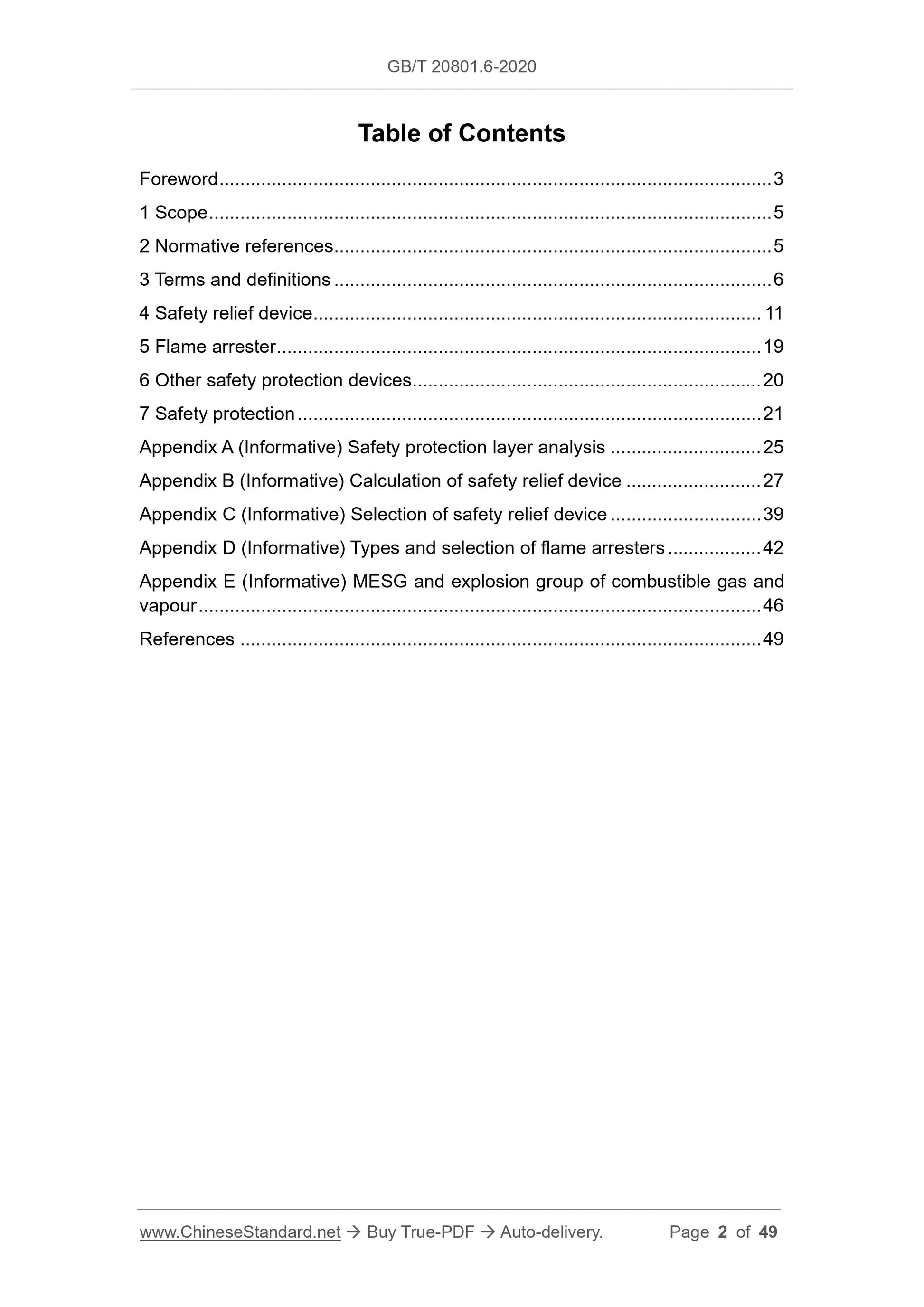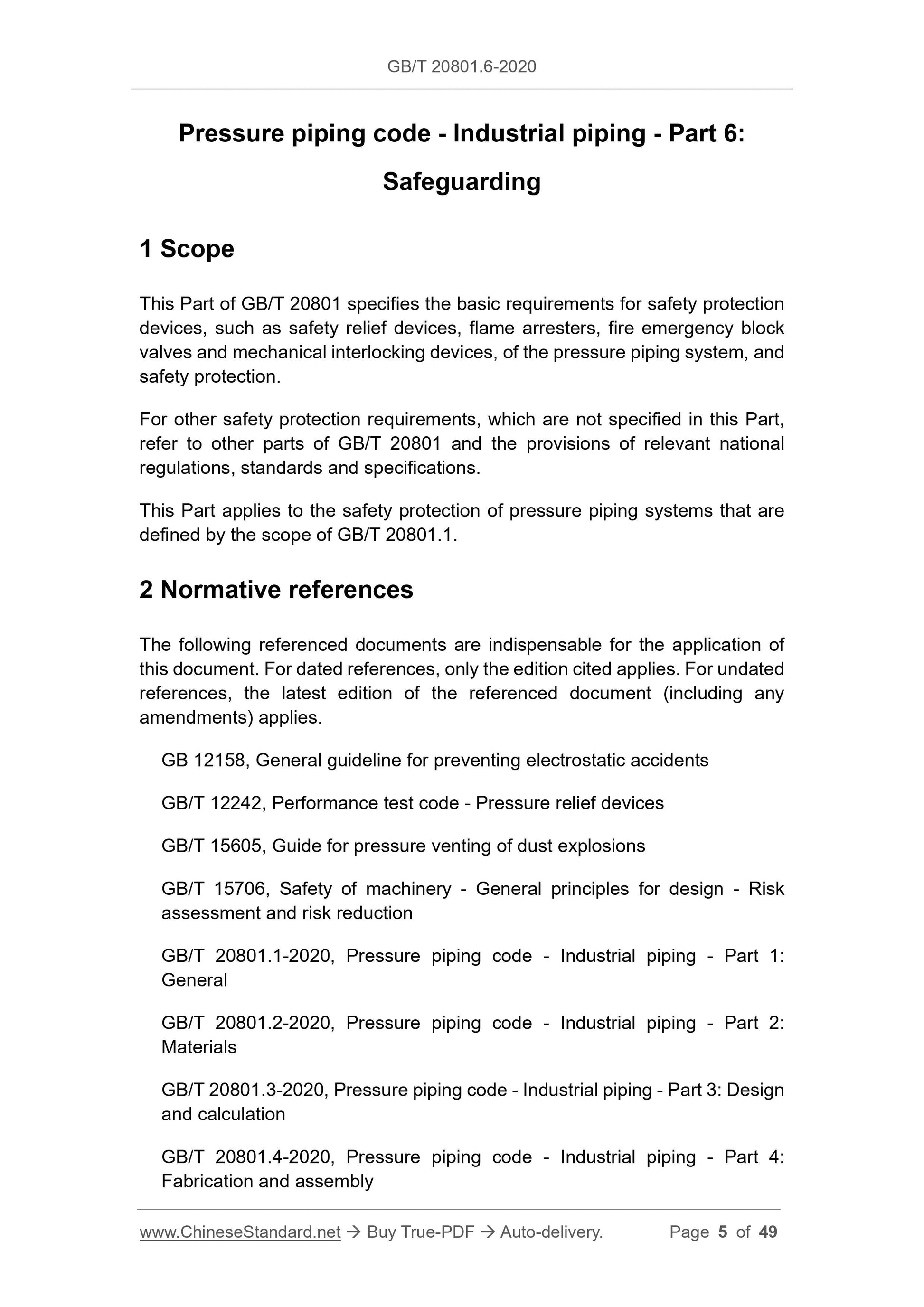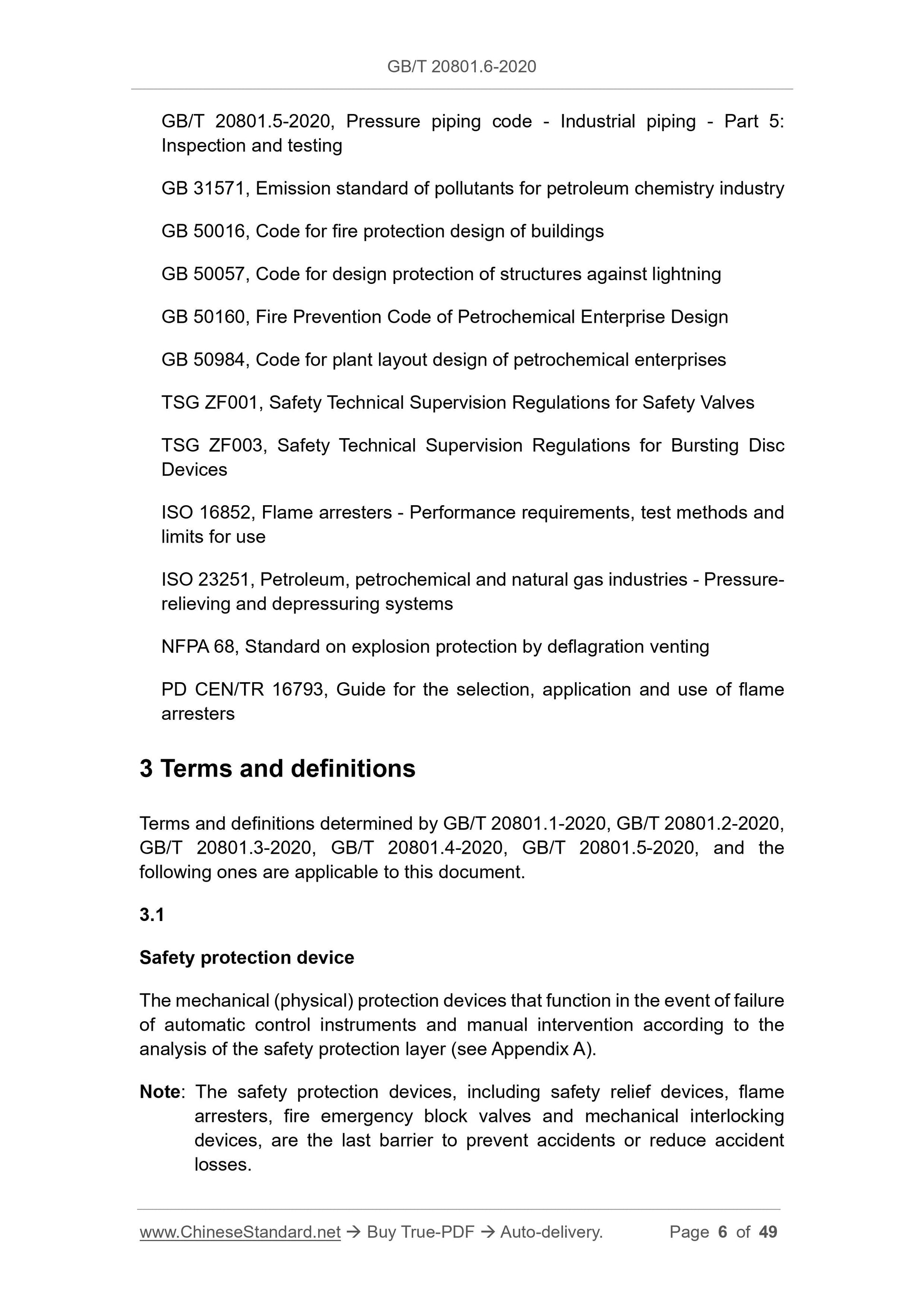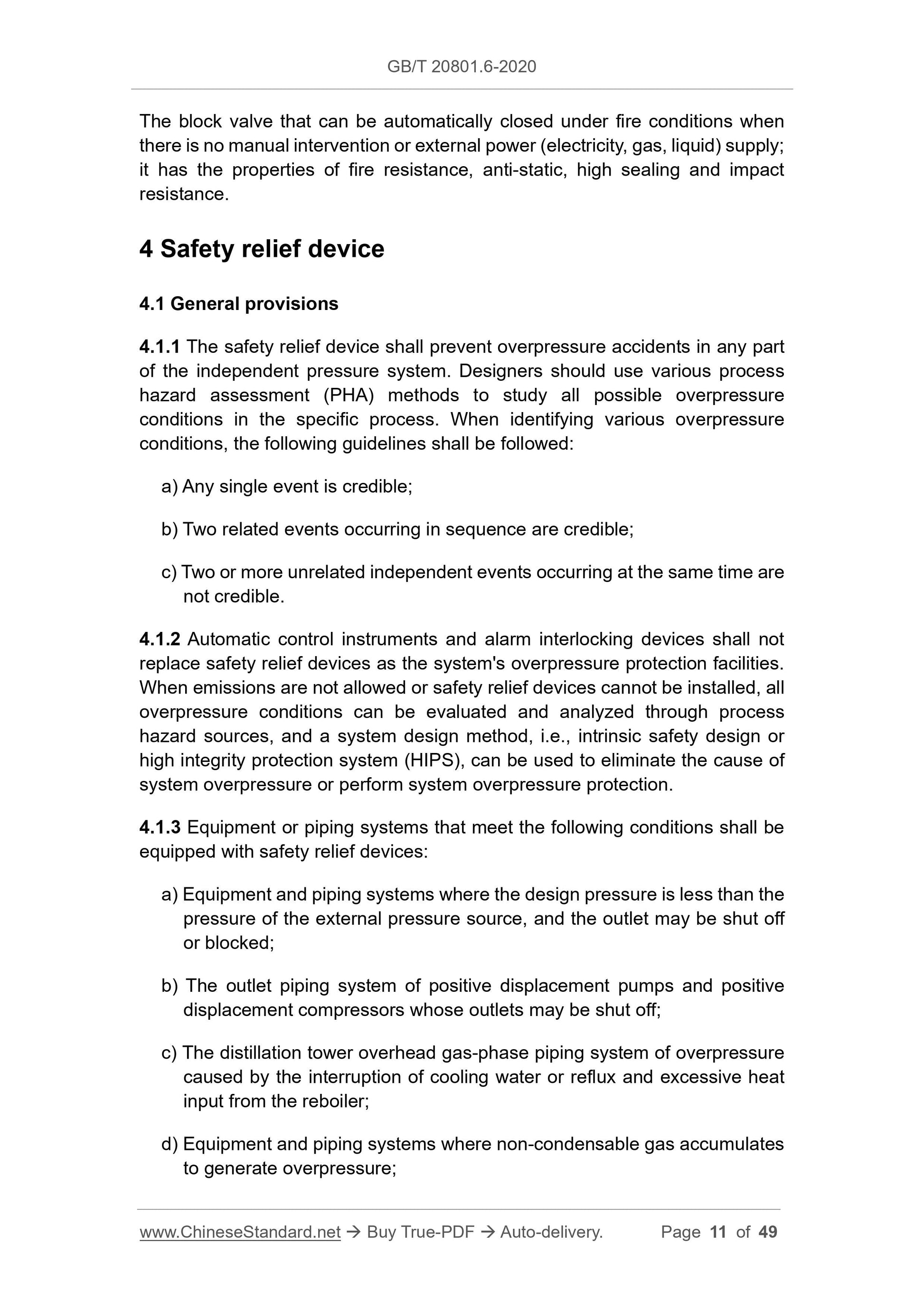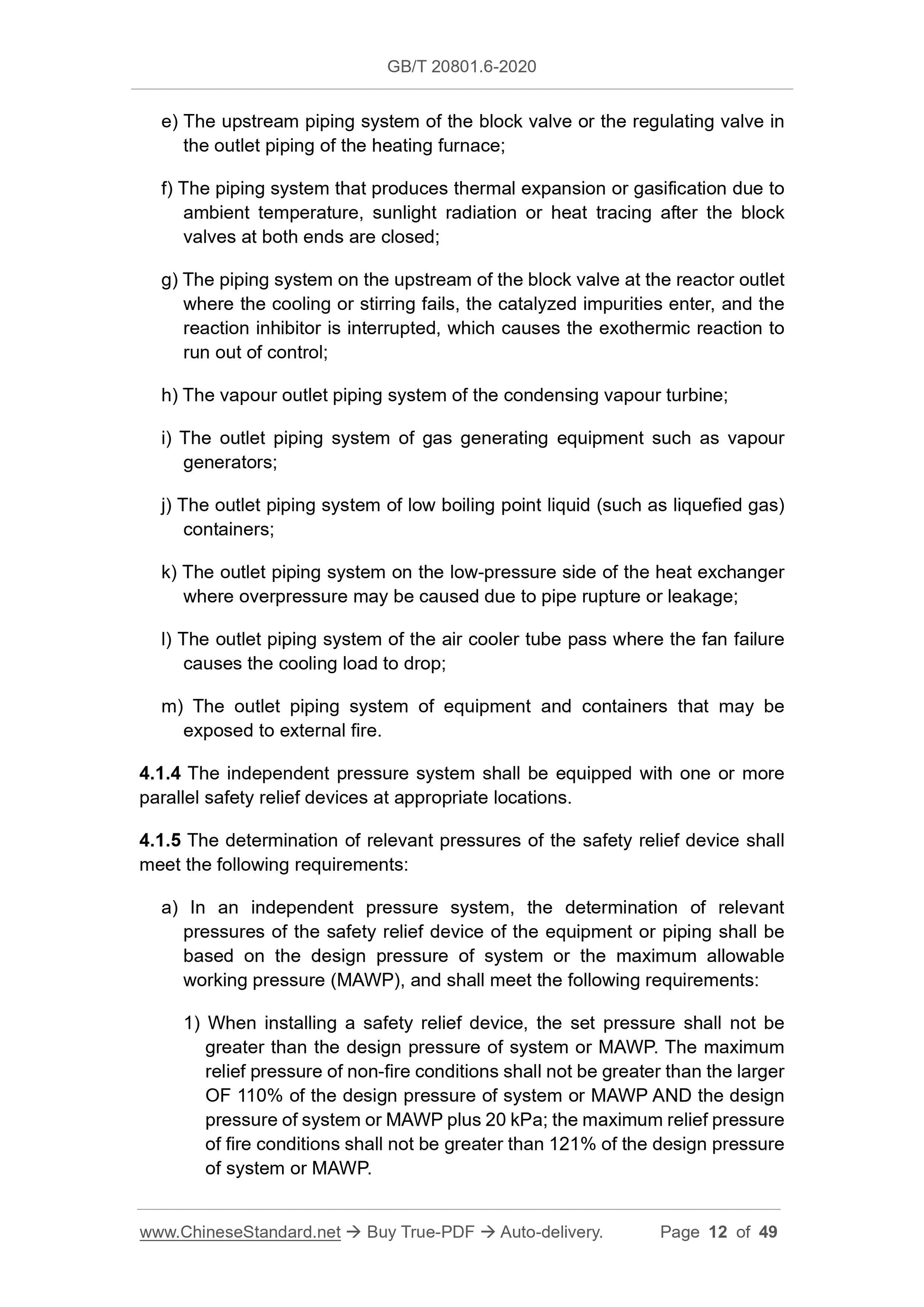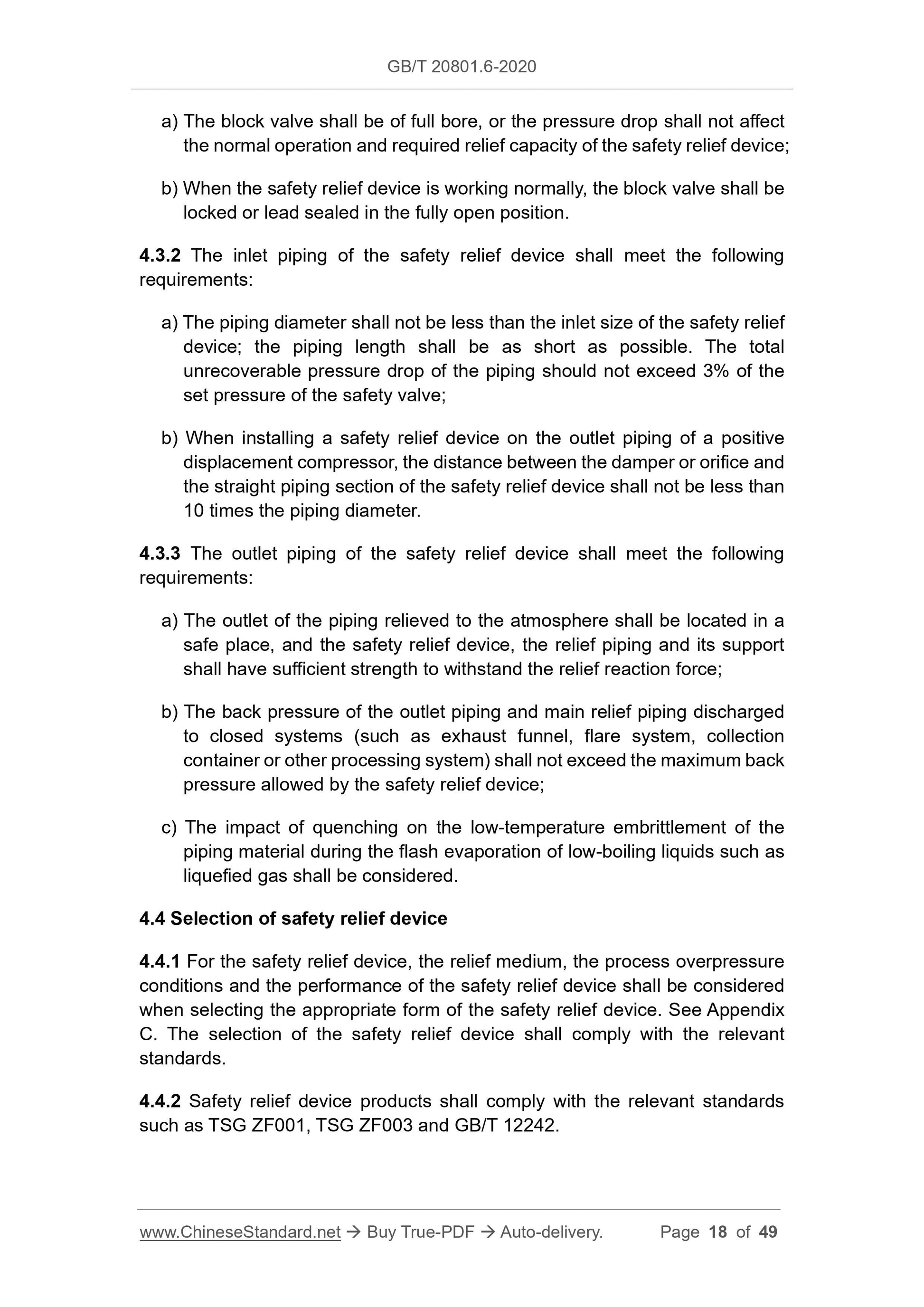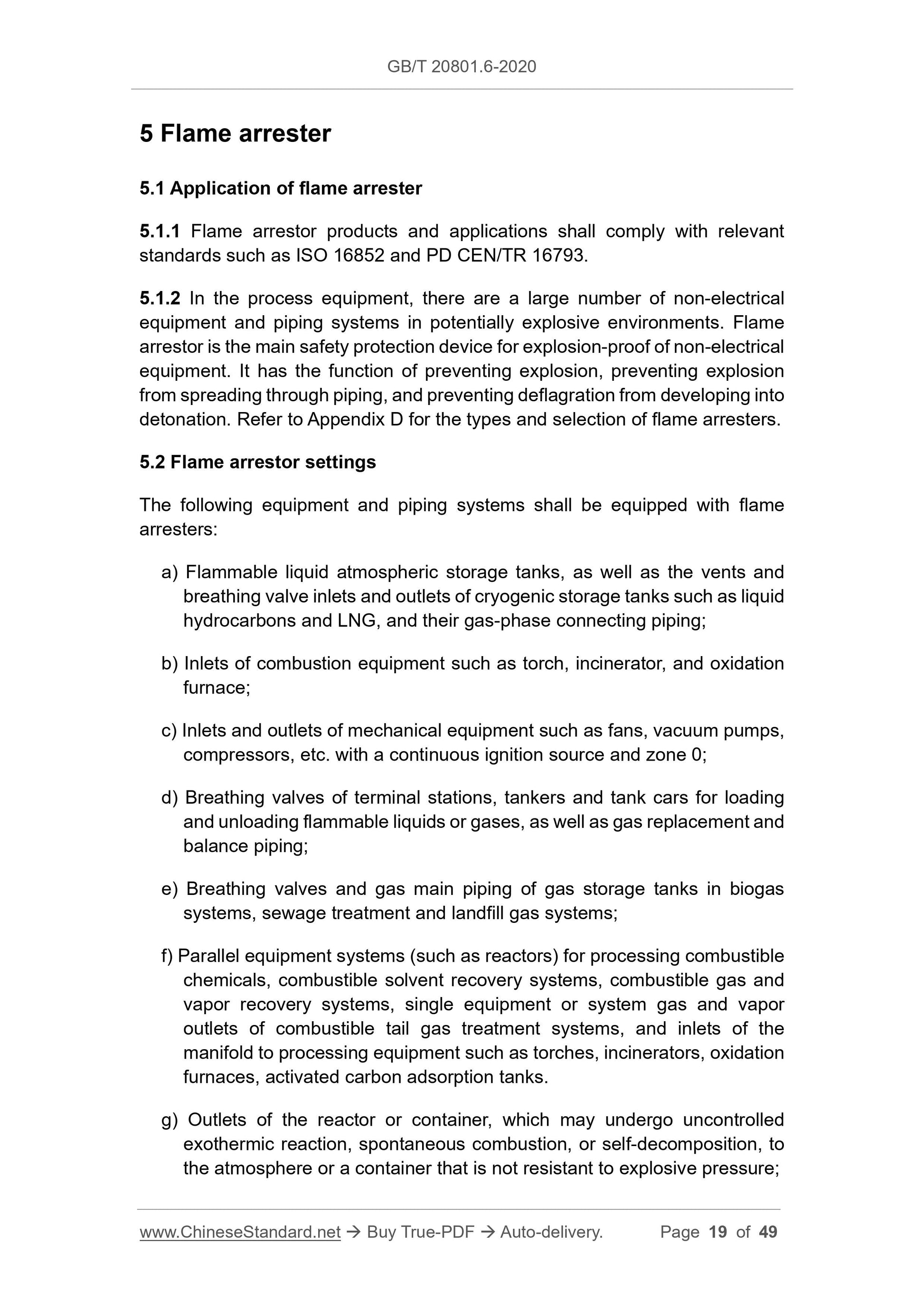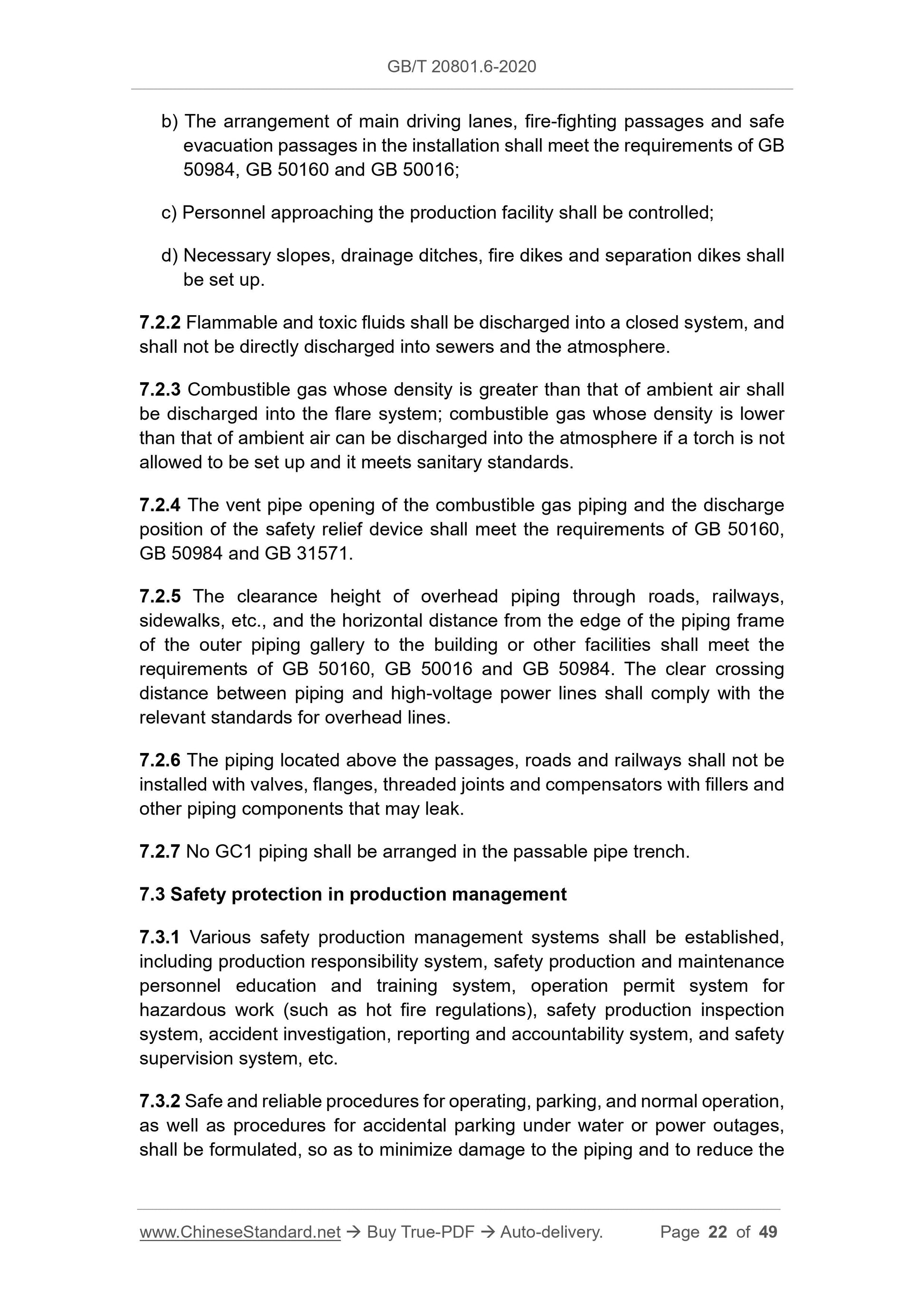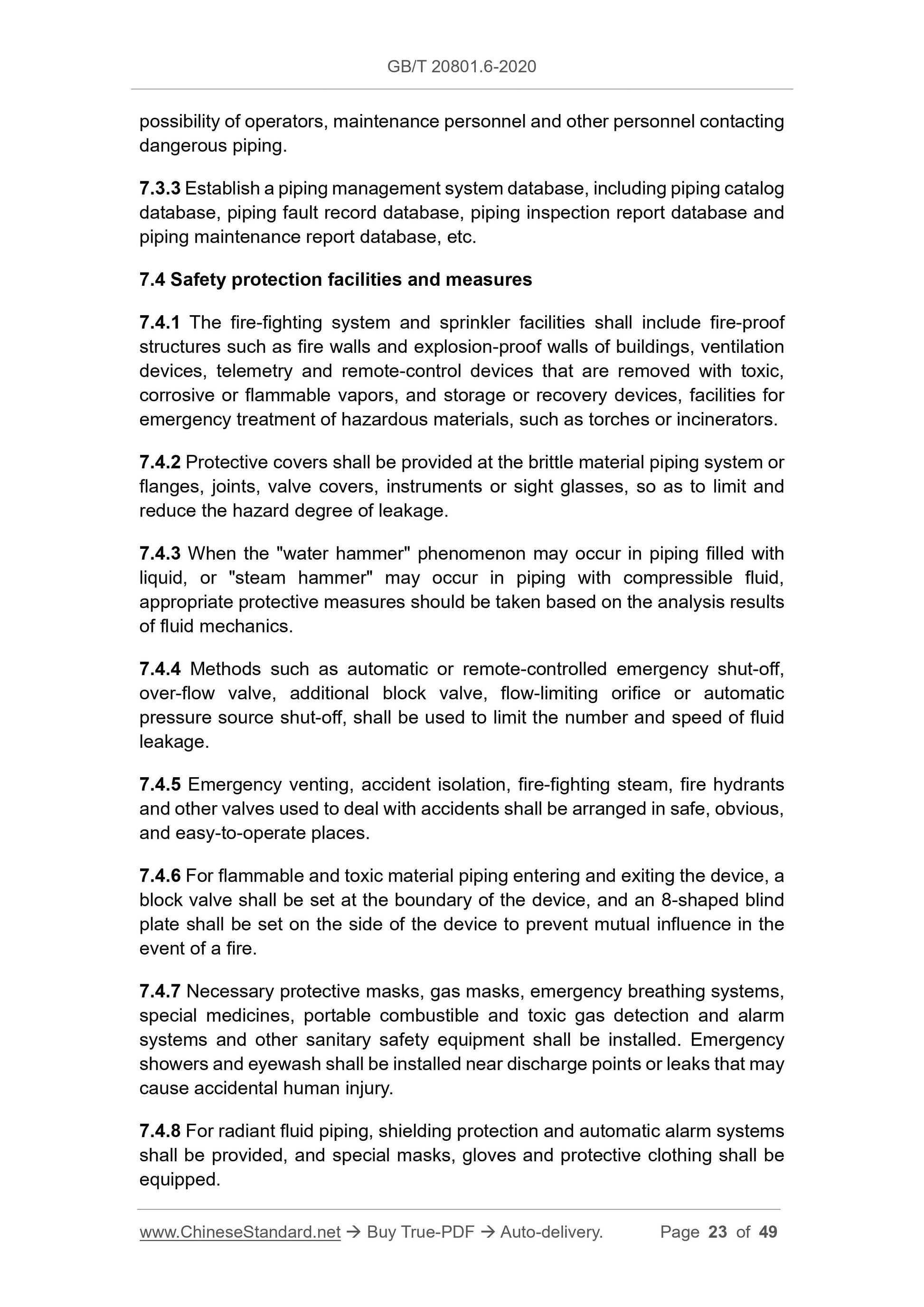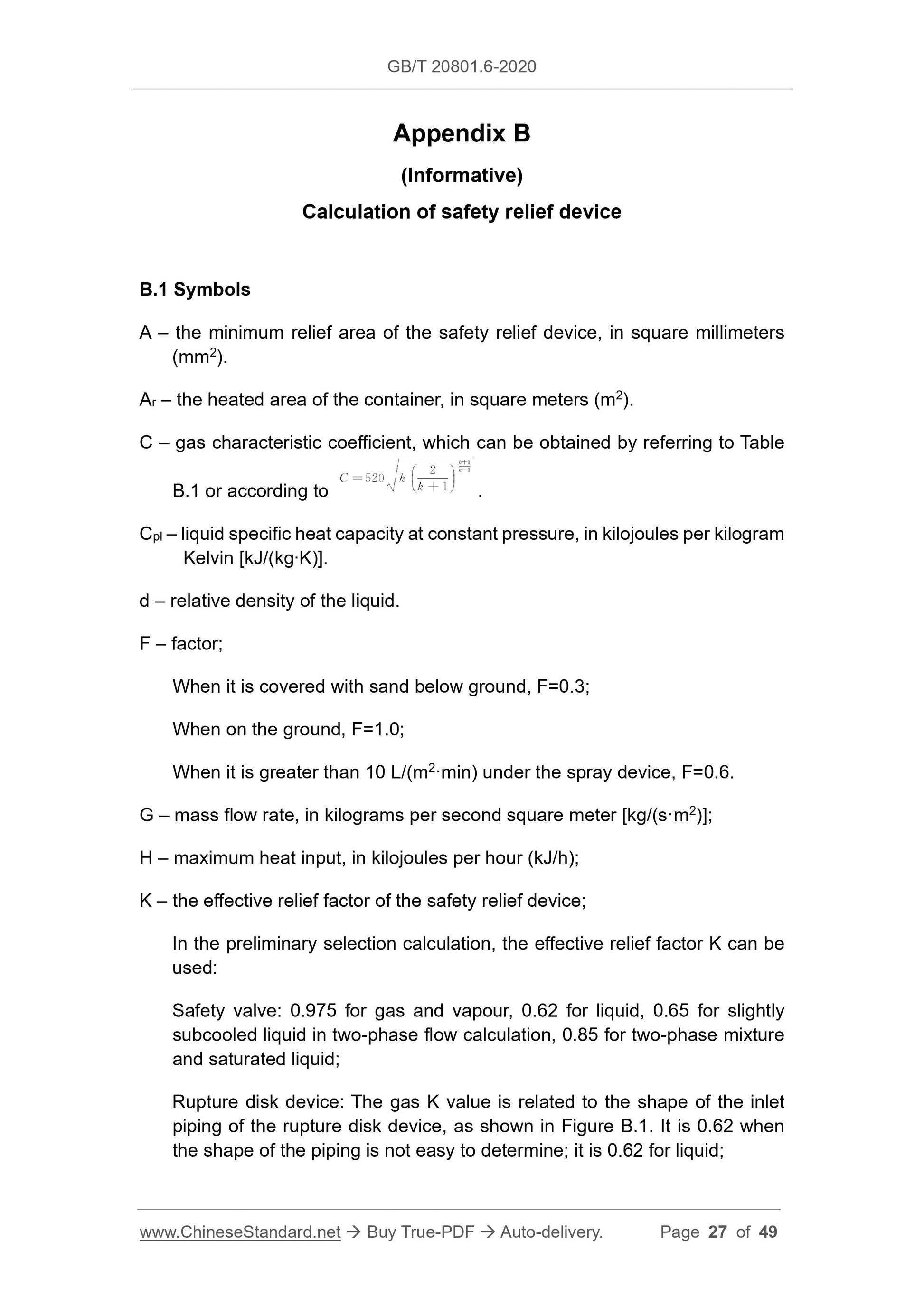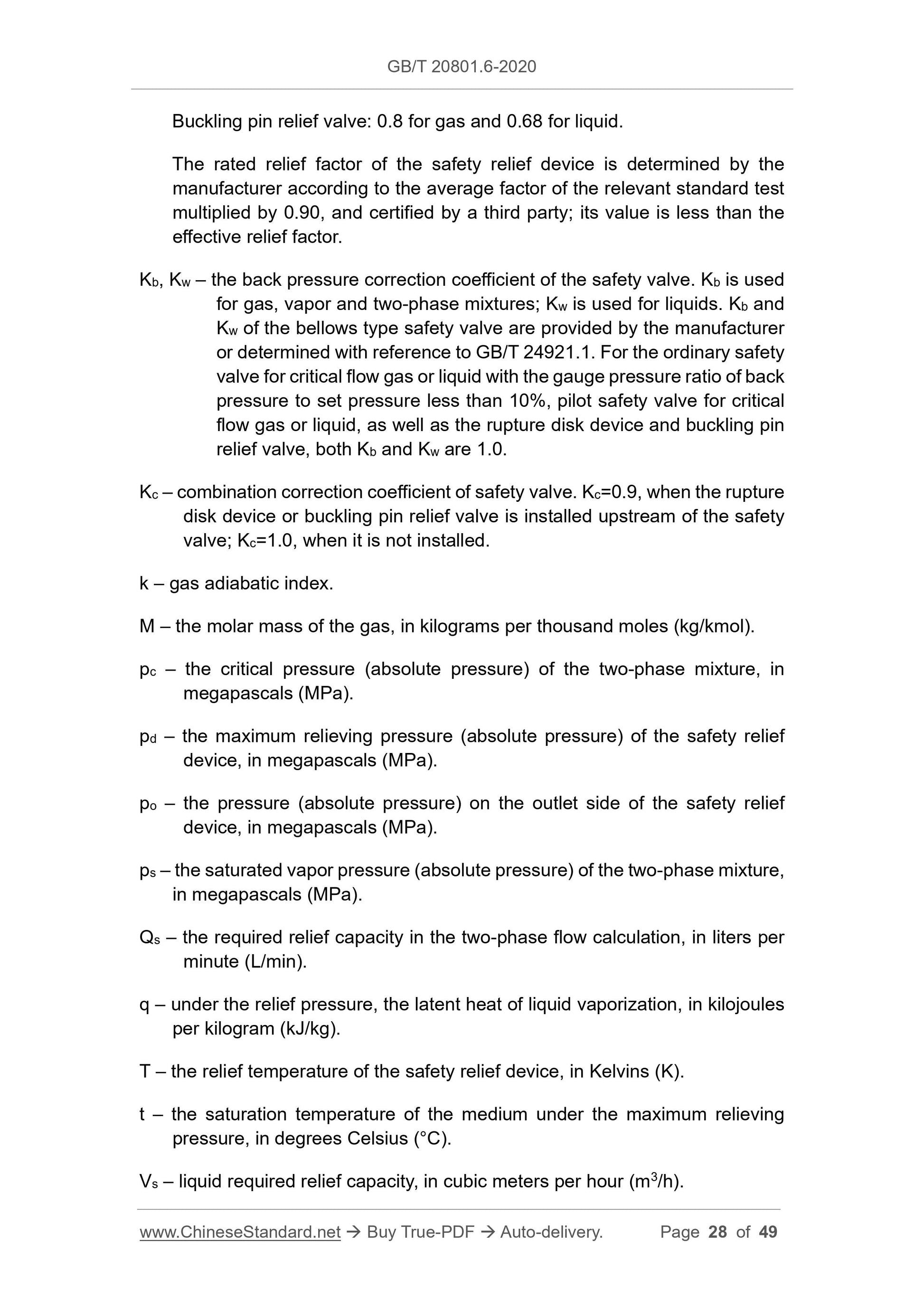1
/
of
12
www.ChineseStandard.us -- Field Test Asia Pte. Ltd.
GB/T 20801.6-2020 English PDF (GB/T20801.6-2020)
GB/T 20801.6-2020 English PDF (GB/T20801.6-2020)
Regular price
$485.00
Regular price
Sale price
$485.00
Unit price
/
per
Shipping calculated at checkout.
Couldn't load pickup availability
GB/T 20801.6-2020: Pressure piping code - Industrial piping - Part 6: Safeguarding
Delivery: 9 seconds. Download (and Email) true-PDF + Invoice.Get Quotation: Click GB/T 20801.6-2020 (Self-service in 1-minute)
Newer / historical versions: GB/T 20801.6-2020
Preview True-PDF
Scope
This Part of GB/T 20801 specifies the basic requirements for safety protectiondevices, such as safety relief devices, flame arresters, fire emergency block
valves and mechanical interlocking devices, of the pressure piping system, and
safety protection.
For other safety protection requirements, which are not specified in this Part,
refer to other parts of GB/T 20801 and the provisions of relevant national
regulations, standards and specifications.
This Part applies to the safety protection of pressure piping systems that are
defined by the scope of GB/T 20801.1.
Basic Data
| Standard ID | GB/T 20801.6-2020 (GB/T20801.6-2020) |
| Description (Translated English) | Pressure piping code - Industrial piping - Part 6: Safeguarding |
| Sector / Industry | National Standard (Recommended) |
| Classification of Chinese Standard | J74 |
| Word Count Estimation | 31,388 |
| Date of Issue | 2020-11-19 |
| Date of Implementation | 2021-06-01 |
| Older Standard (superseded by this standard) | GB/T 20801.6-2006 |
| Regulation (derived from) | National Standard Announcement No. 26 of 2020 |
| Issuing agency(ies) | State Administration for Market Regulation, China National Standardization Administration |
Share
